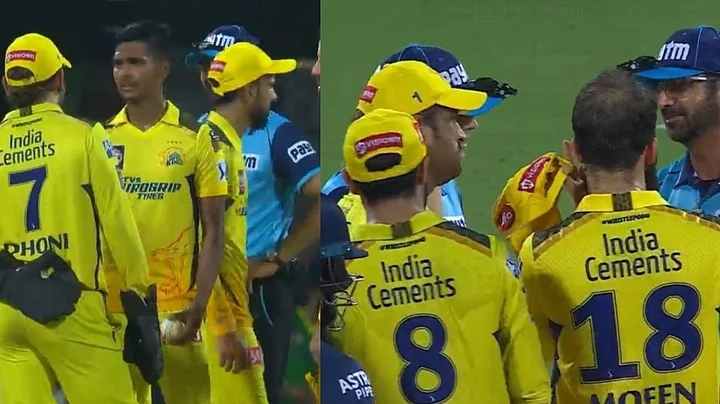As he guided his team, Chennai Super Kings, to a record tenth final in the Indian Premier League (IPL), MS Dhoni proved his mettle as an ingenious leader, for the umpteenth time in his career.
Barring his efficacious bowling alterations and fielding placements, another move, albeit not explicitly documented, paid dividends in CSK's 15-run triumph over Gujarat Titans in Qualifier 1 of IPL 2023, at the MA Chidambaram Stadium on Tuesday, 23 May.
Here's all you need to know about it:
What Was the Incident?
The incident happened prior to the 16th over of Gujarat's innings. At that stage, the Titans were batting on 102/6, requiring 72 runs off the last five overs, with Rashid Khan and Vijay Shankar at the crease.
With three of his four-over quota remaining, Dhoni called for his death overs specialist, Matheesha Pathirana to bowl that over. However, given that the Sri Lankan pacer was out of the field before that over, the bowling change was blocked by the two on-field umpires, Anil Chaudhary and Chris Gaffaney.
Why Did the Umpires Object to the Bowling Change?
According to the laws of the game, should a player be outside the field whilst the match is going on, he/she will not be allowed to bowl until a stipulated 'penalty time' has been served. During this phase, the player will only be involved in the game as a fielder.
'A player shall not be permitted to bowl, until having been back on the field of play for a period of time known as Penalty time,' states MCC's Law 24.2.2.3.
Pathirana happened to be briefly out of action for a while, before returning to bowl the 16th over. Adhering to the rules, the umpires blocked the bowling change.
What Did Dhoni Do?
While it once seemed that Tushar Deshpande was preparing to bowl the 16th over, Dhoni rather spent the next few minutes having a conversation with the umpires and his players.
Albeit a comment has not been furnished on the issue, commentators, fans and pundits have all come to a unanimous conclusion, in terms of the move's motive.
With Pathirana requiring to spend a few minutes on the field before being eligible to ball, Dhoni might have taken a punt by halting play for the next few minutes, in a bid to facilitate the bowling change.
Why Was It a Gamble?
With the stoppage in play not triggered by a natural circumstance, but by a team, it meant that the minutes of inactivity will be added to Chennai's innings timer.
Subsequently, it became inevitable that the four-time champions will now bowl out their 20 overs within the stipulated time. Ultimately, in the last over, Chennai had four fielders on the boundary instead of the usual five, as a penalty for exceeding the time limit.
Was This Gamble Necessary? Did It Pay Off?
Though it came with its fair share of risks, the move might have been necessary from Chennai. With Pathirana having three overs left to bowl and only five overs to spare, using a different bowling option would have meant Dhoni's prime bowling trump card could only bowl a maximum of three overs.
In addition to that, Tushar Deshpande also only had a couple of overs remaining. Should Pathirana have not bowled the 16th over, Dhoni would have had to forcibly introduce a sixth bowler into the attack.
Though not instantaneously, the gamble did pay dividends. Pathirana conceded just 15 runs in his last two overs and also scalped two wickets. Meanwhile, by the time the fielding penalty was applied, Chennai already had the victory in their grasp, with Gujarat requiring 27 runs off the last over with only a wicket in hand.
(At The Quint, we question everything. Play an active role in shaping our journalism by becoming a member today.)
